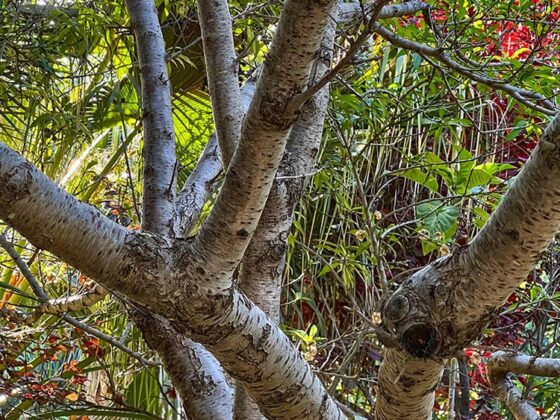Common Plum or European Plum
Prunas avium
Prunus domestica, the European Plum tree and its many varieties / cultivars, is a species of small tree belonging to the Rosaceae family. The species is native to the Caucasus, Anatolia and Persia and is widely cultivated in all temperate countries.
Tree up to 7 (10) m, deciduous with glabrous branches, which are generally reddish and shiny. The leaves are obovate, elliptical or ovate-lanceolate, acuminate, with the glabrous surface, and the lower surface is more or less pubescent in the veins. The flowers are solitary or geminated. The fruit is a monocarpelar drupe of bluish-black colour, dark purple, reddish, yellowish, greenish, etc; the mesocarp is edible and sweet-tasting; the endocarp can be smooth or wrinkled, round, globular orelliptical and it can be sharp or smooth and adhered to the mesocarp.
It is a fruit species that has been cultivated since ancient times. There are two large groups of cultivated plum varieties. The so-called European (Prunus domestica) and the Asian (Prunus salicina). At present, the Asian varieties are the ones that are most cultivated. One of the reasons is the lower need for the winter cold of these varieties, so therefore are grown in warmer areas.







